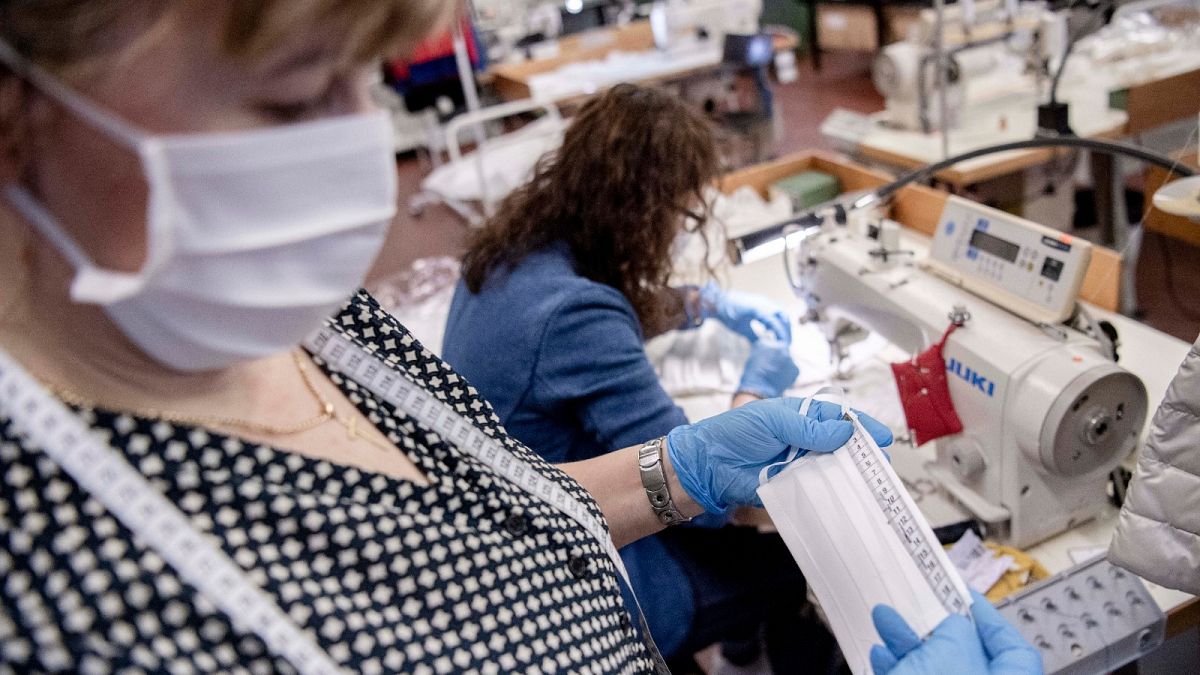San Marino has the highest number of COVID-19 deaths per number of people in Europe, but a recently launched screening strategy has already proved hugely successful thanks to the combination of two different tests.
San Marino is currently the world's worst-affected country in terms of COVID-19-related deaths per capita of population.
This micro-republic, one of the world's oldest countries, nested in the centre of the Italian peninsula, could suffer a devastating economic downturn due to the pandemic.
Its secretary of state for work, Teodoro Lonfernini, told Euronews the country may need "€80 to 100 million" to fix its economy once the emergency is over, and its GDP "could fall by over 70%".
However, a new patient-screening strategy is showing signs that the tide can be turned, at least on the health front.
A 'proactive' approach to battle COVID-19
San Marino's authorities told Euronews they were unable to properly coronavirus-screen the population up until quite recently.
"Before April 7, we'd carry out the swab-tests and then get them sent to Italy for the results. But as we got our kits we started doing many more tests along with the serological ones. That meant that the number of positive patients that we found went from 279 to 382 in just a week".
Once San Marino received all the necessary equipment, it started searching for infected people more proactively.
San Marino's infective disease expert Massimo Arlotti said the country "began searching in the places where we thought there might be infections; in other words among those that had just ended quarantine, as well as in their families, or among people with light symptoms".
"We noticed that a significant number of people were still positive once they'd finished quarantine. We tested 100 people and found 66 of them were still positive. We need to stay aware, as some people remain positive even at the end of the quarantine period.
"This proactive research strategy is only doable in a small territory with a small population. Here, it proved effective. We've had consistent data. And no new infections, but new diagnosis only. We are now able to identify people who got infected already. Perhaps it doesn't look good in terms of numbers, but it does reduce the number of new infections."
A high number of people screened with the 'two-test' strategy
Health authorities in San Marino are able to tell whether somebody is positive in less than an hour.
Around 5.6% on 30,000 Sammarineses have been tested for COVID-19 so far. Italy, its closest neighbour and one of the countries that did the most tests in Europe, has tested 1.6% of its population.
Arlotti said San Marino is now using "quick-response" tests that were approved by the US' Food and Drug Administration (FDA) but not by the EU yet (San Marino is not in the EU).
The molecular test, also known as the saliva swab, costs €80 and is also certified by the EU; the serological one, which is done by taking a blood drop, €20.
As explained to Euronews by Giovanni Maga, a virologist at the CNR Molecular Genetics Institute, the virus genome is extracted from the saliva buffer while antibodies are searched for in the serological test, which has a 90-95% efficacy.
"If we want to check if a patient has the virus, the molecular test - the swab - is enough. In Italy, you can only do that, because the serological tests have yet to be certified by Italy's Ministry of Health."
"But if you want to properly assess the health state of the population, 'catching' the asymptomatic immediately, the serological test should be done along with the molecular test" - which is what San Marino is doing.
Financial aid and local medical groups supporting the population
In addition to that, the country has deployed five medical groups that treat patients at home.
This way, pressure on hospitals is eased drastically; as of Friday morning April 24, only three patients were still in intensive care.
In terms of containment measures, most of the border crossings with Italy are closed - only five are accessible under close surveillance.
In San Marino, restrictions were similar to Italy, "but perhaps compared to Italy we felt more controlled", 50-year-old craftsman Fabrizio Bernardini said.
"From an economic point of view, however, I haven't had any income in two months. I'm in trouble. Yes, there will be low-interest loans, but I will never see again the salary that I lost."
The country's Artisan Union (UNAS) said it has lost about 85% of its business due to coronavirus.
As a relief for those in economic difficulties, San Marino has launched a 150-hour parental leave measure as well as provided a €580 wage per family for the entire duration of the health emergency.
The €580 wage gets increased by €150 if there is a partner and by €50 for each additional member of the family.
